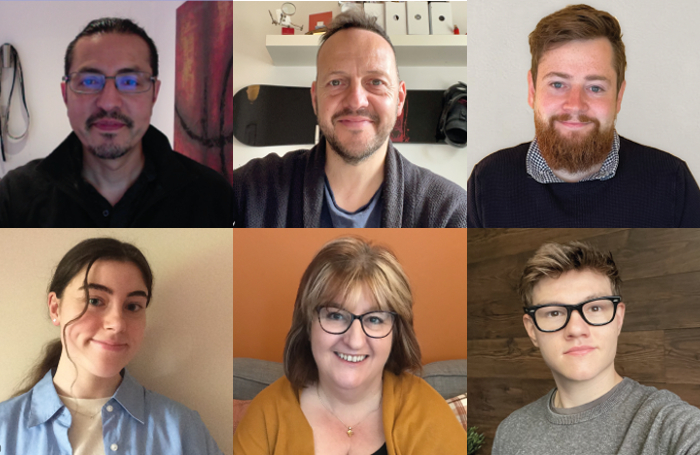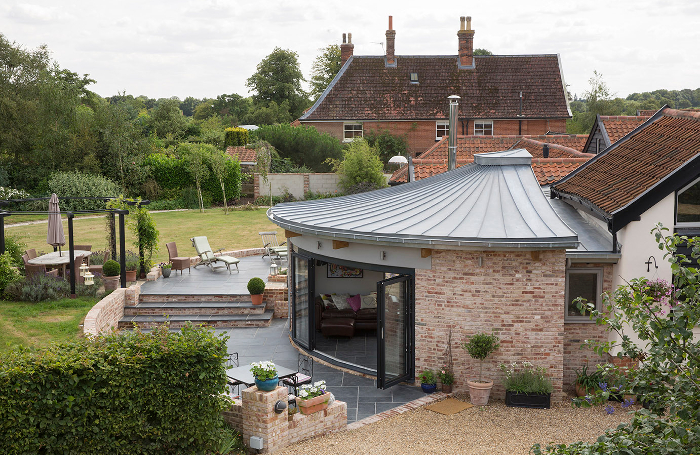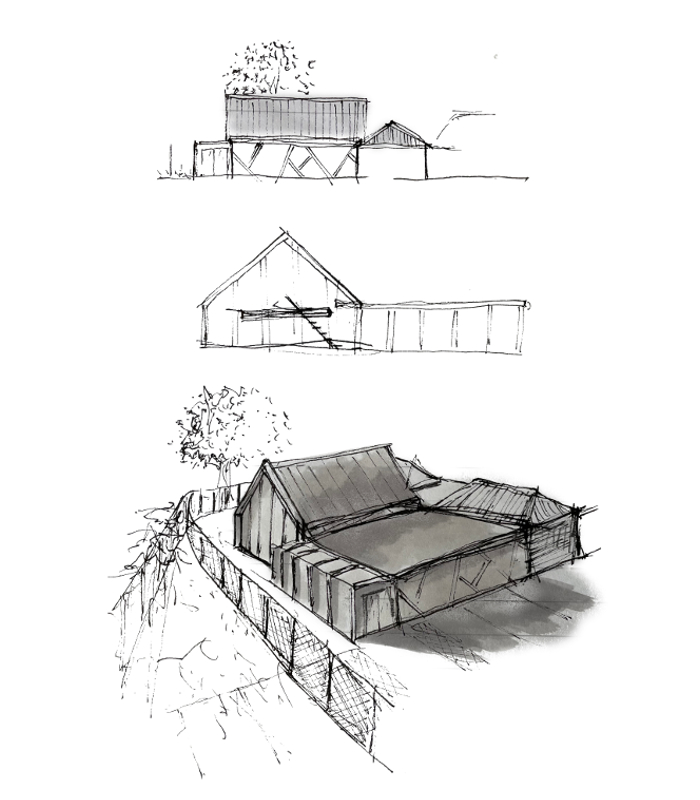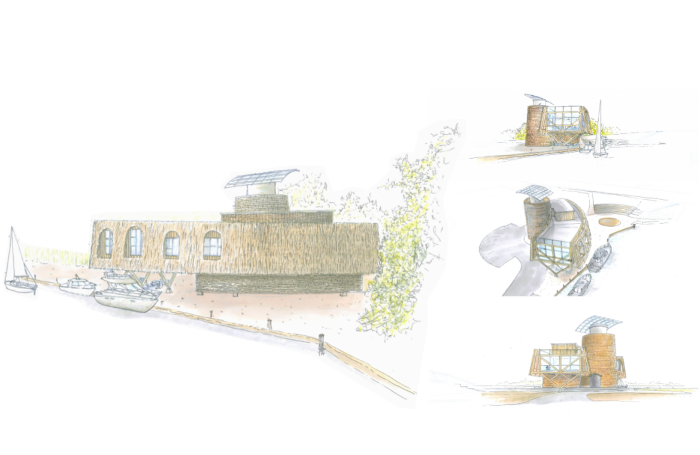CAM Architects is a small, award winning architecture practice based in Norwich. Our range of work in recent years has encompassed public housing, private residential, healthcare, retail premises, restaurants, hotels, and heritage projects.
The practice staff are Evert Amador, Managing Director and Certified Passivhaus Designer; Kristian Molloy, Director; Ian Malton, Consultant; Tom Norris, Head of Research and Development; Jordan Smith, BA (Hons) Architectural Assistant Apprentice; Kate Rutland, BA (Hons) Architectural Assistant Apprentice and Dawn Lemmon, Administrative Support.
Our philosophy and approach to architecture centres around the idea of creating a "sense of place." We seek in our designs to create connections between people and the architecture which develop over time, thus creating meaningful places for people to dwell and give a sense of belonging. Most of our clients really appreciate our collaborative style of working and our commitment to education through our apprentice scheme.
We believe that computational tools provide a powerful framework to evaluate designs, which otherwise could not be done within limited time constraints of a project. The research and development side of the practice focuses on providing tools to evaluate designs from a simple sketch.

How do you incorporate sustainability into your work?
Tom Norris: At CAM, we believe sustainability requires a multi-faceted approach. On one hand, we have a role to specify sustainable materials, design robust details and promote renewable processes within the built environment, but as designers, we also have an additional role to optimise our designs to be efficient. This can be efficient in space, in cost or in a multitude of other parameters. On some level as designers, we all do this intuitively, but at CAM we have tried to push this further and to analyse our designs quantitively. This means it is data driven and can be tested to get a result which can then be used to compare with other design options.

What do you think is the most important issue for architects to focus on right now, and what are you doing as a practice to tackle it?
Evert Amador: Architecture is, and has always been, at the intersection of many subjects including politics, philosophy, environment, sociology, economy, science, technology, and many others. All of these subjects and their present circumstances not only play an important role in how projects are conceived and materialised, but they also create constraints that accumulate to the point where projects are full of obstacles.
Certainly, the most important matter to deal with is the impact that human activities are having on the environment. I’m not only referring to energy and materials consumption which seem to be the focus of the current rhetoric but a much wider view of how other matters make us humans act as we do.

How does the practice support your learning journey?
Jordan Smith: As an apprentice, I find it extremely helpful to work with other experienced qualified architects as everyone has so much knowledge to share. Having colleagues around me means that I can ask questions, whether that be to guide me to the right place to find information or provide feedback and critique my work to help me improve. Everyone at CAM has a different skillset and using their knowledge and understanding improves my work.
Kate Rutland: CAM Architects has significantly supported my development. As an apprentice, I gain valuable experience by participating in a variety of projects and completing various tasks, obtaining knowledge and feedback from colleagues. Regarding university assignments, guidance is given when it’s required, and presentations are held for the team allowing us to receive feedback while improving our presentation skills.
What is your advice for future generations of architects?
Kate Rutland: I believe future generations of practices should strive for fulfilment, development, and collaboration, with sustainability at the forefront. Experience in practice is the greatest advantage of an apprenticeship. Hence practices and architecture institutes should frequently interact via lectures, workshops, and work experience to allow the full time students to be exposed to the profession throughout their degree.
Jordan Smith: My advice for future generations of architects is to practice good time management! While going through qualifications at university and working full time, balancing office work, schoolwork and pleasure is essential for staying on top of assignments but more importantly good mental health. The skill of time management will also benefit you when moving into an architectural practice. I also suggest presenting as much work as possible at university tutorials. This allows the tutor to gain a greater understanding of your project and the ideas you are proposing.
Evert Amador: Travel far and wide!

What do you think smaller architecture practices need the most support with and does this differ from larger, more established practices?
Kristian Molloy: We recognise that whilst the diverse skill set and design ethos may vary greatly amongst different architects, the function, and mechanics to deliver a project should, in theory, be very similar.
However, as a smaller practice with seven members of our team at CAM, we feel that the opportunities for projects can sometimes vary between small and large practices.
Fees have often been a quandary for architects, however, a more recognised, consistent, and reflective fee structure for both large and small practices would allow all architect practices to get paid fairly for the work at various RIBA works stages.
We have also found more recently that the obligatory PI Insurance has become increasingly challenging, with many insurers now considering even the most standard projects to be of high risk. This has resulted in a sharp increase in premiums and consequently, we have found clients are demanding a much greater PI Insurance cover, which may not be financially viable and potentially disqualifies smaller practices for new schemes.
How do you think the profession could break down barriers to entry for people of all backgrounds and abilities?
Evert Amador: I have been practising architecture in England for the last 16 years but I’m originally from Mexico where I qualified in 2002. I also did postgraduate studies in Spain before arriving in the UK. Because of my background, I had to break down a few barriers to be able to make a start. I was lucky when I knocked on CAM’s door back in the old St Georges Street office. The difference was the people, or rather, how they were very inclusive and different to other practices. There was already a Brazilian architect working at the practice, and they offered me the opportunity to join.
CAM has always been very inclusive, given opportunities to many people from many different places and backgrounds. As I write this, I can remember them all, so different yet so unique as individuals.
So that’s how we’ve done it, just opening doors, and giving people an opportunity.
To find out more about CAM Architects, visit their website or follow them on Twitter or Facebook.









